|
|
|
Surface
Sites WWII
Heavy Anti-Aircraft Batteries |
|
| Created
23-07-2002 Last update 07-01-2019 |
|
|
|
|
click the
arrow |
|
< |
page
2 of
4 |
> |
|
|
|
|
|
|
|
In 1938
Fort Nelson was altered for use as an area magazine. Ten shell
storage sheds were constructed on the parade of the fort and a new
gateway driven through the west gorge wall (rear of the fort) to
allow ammunition lorries to enter. At this time it has been
suggested that the old Victorian magazine served as a shell store
for Bofors shells. It has been further suggested that the former
Examining Room (where the barrels of Powder where inspected)
was used as a store for fuses for the Bofors shells but this has
now been discounted as the 40mm Anti-Aircraft shell came ready
fused from the filling factory. The shelves
in this room may well date from WWII as they have metal brackets
which were not allowed in Victorian magazines.
|
|
| |
|
Sources |
|
REDAN
59 Palmerston
Forts Society
Bob
Jenner |
| |
| Google
Earth Aerial View |
|
| |
| |
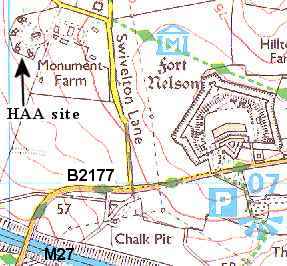 |
|
|
|
|
|
|
|
|
|
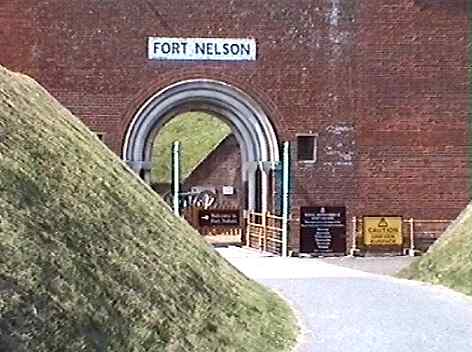
|
|
During
WWII, Fort Nelson held all the anti-aircraft ammunition for
the Portsmouth area. The fort is open all year round, and
admission is free. Between 1951 and 1955 the Fort housed the
Anti-Aircraft Control Room for the Portsmouth and Southampton
group HQ. This has since been dismantled.
|
|
|
|
|
|
|
|
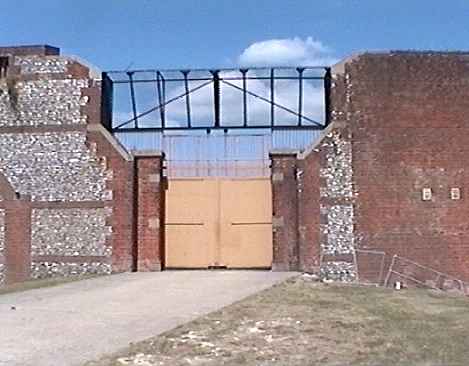
|
|
This
gate was added to the western gorge wall in 1938 to allow the
access of heavy ammunition lorries to the parade ground.
|
|
|
|
|
|
|
|
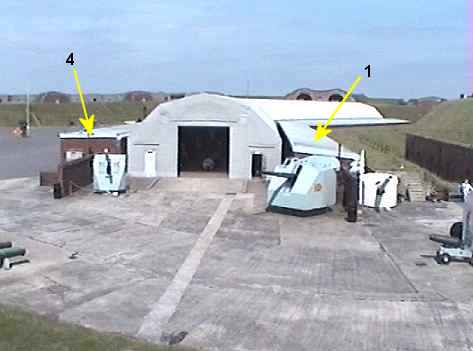
|
|
The
Parade of Fort Nelson. The large white modern building is
the museum Artillery Hall. To the left is number 4 magazine, to the right
number 1 magazine. Notice how the buildings were 'V' shaped, accommodating
the shape of the parade.
|
|
|
|
|
|
|
|
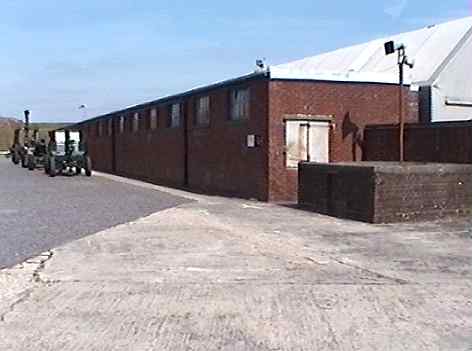
|
|
Number
4 magazine. There were originally 10 of these buildings. On the
night of January 9 / 10 1941 there were 1,220 anti-aircraft rounds
issued. Fort Nelson itself was bombed but due to the fact it's
still there it can be assumed that the magazines were not
touched. In October 2002 it was announced that one of
these magazines is to be restored to its former glory.
|
|
| |
| |
| |
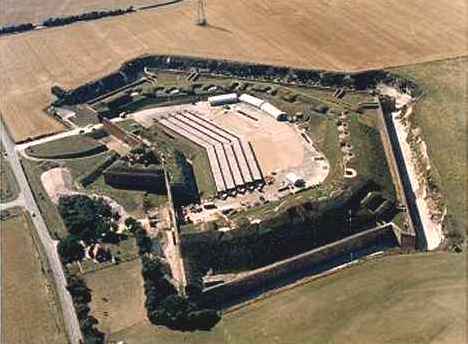 |
|
NEW
- 12-09-2004
Aerial
photo of Fort Nelson showing the original 10 'V' shaped magazines
on the Parade.
|
|
| |
| |
| |
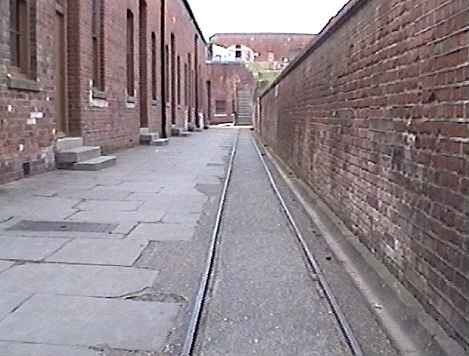 |
|
Part
of the light railway installed in the late 1930s to help convey
ammunition to the main magazine under the parade ground.
Ironically, this is a 60cm German field railway which was captured
at the end of WWI and demonstrates the best recycling effort I
have ever seen. The rolling stock was man-hauled.
|
|
| |
| |
| |
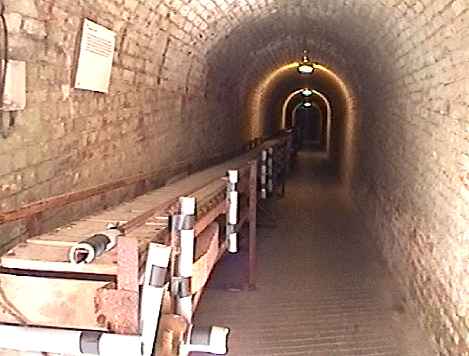 |
|
An
electric conveyer belt was installed next to the railway so that
ammunition could be delivered and brought-up from the Victorian
underground magazine. The ammunition stored here was mainly for
the 40mm anti-aircraft Bofors gun. The magazine had electric fans
installed to aid ventilation.
|
|
| |
| |
| |
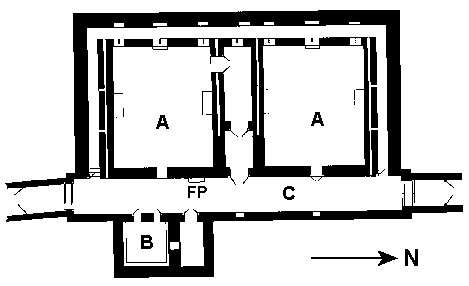 |
|
Fort
Nelson Main Magazine 1938
Graphic
reproduced from REDAN 59. Copyright
David Moore Palmerston
Forts Society |
| A |
40mm AA Bofors ammunition store |
| B |
Store in the former 'Examining
Room' |
| C |
Magazine passage |
| FP |
Fire Point |
|
|
| |
|
|
|
| |
W/16093 l/Sgt D A Strong ATS - 1st
Berkshire Yeomanry My mother
(Dorothy Ada Strong, married name Bethell) was an ATS soldier
and a cook at several wartime sites, which are engraved in her
cigarette case. She also manned the AA guns when a
raid was on, and was one of the few who got the war medal as
well as the normal one for WWII. She was called-up on 1st
September, 1939. I have added a couple of
pictures of the cigarette case.
John Bethell - January 2019
|
|
|
|
 |
|
Inside the case.
Anti-Aircraft sites that Dorothy served at during WWII.
More about the Hayling site can be found
here.
|
|
|
|
|
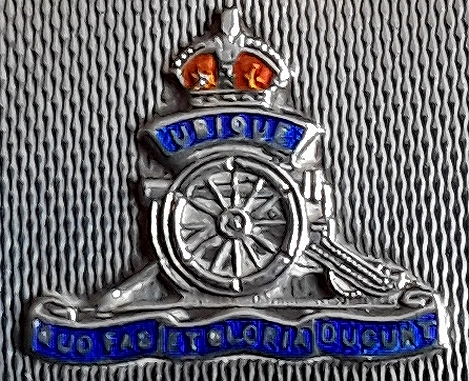 |
|
Front of the case.
This is a World War Two, Royal Artillery, Cap Badge.
The Latin translates as: "Everywhere That Right And Glory Lead".
|
|
|
| |
|
|
click the
arrow |
|
< |
page
2 of
4 |
> |
|
|
|

|



















